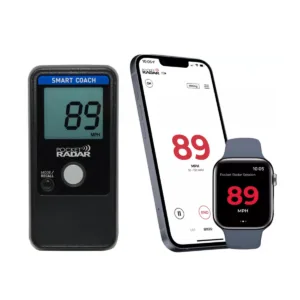 In the fiercely competitive realm of college baseball recruitment, the speed at which a pitcher can hurl the ball is more than just a number—it's a defining factor. Pitching velocity stands as a beacon, drawing the keen eyes of D1 college coaches who are constantly on the lookout for promising talent. But amid the whirlwind of showcases, tournaments, and scouting events, one question echoes loudly: What precise velocity benchmarks do these D1 colleges seek in high school pitchers? Unraveling this mystery holds the key to unlocking a player's potential journey to collegiate baseball glory.
In the fiercely competitive realm of college baseball recruitment, the speed at which a pitcher can hurl the ball is more than just a number—it's a defining factor. Pitching velocity stands as a beacon, drawing the keen eyes of D1 college coaches who are constantly on the lookout for promising talent. But amid the whirlwind of showcases, tournaments, and scouting events, one question echoes loudly: What precise velocity benchmarks do these D1 colleges seek in high school pitchers? Unraveling this mystery holds the key to unlocking a player's potential journey to collegiate baseball glory.
Pitching velocity isn't merely a statistic; it's a currency in the world of baseball recruitment, where every mile per hour can make a monumental difference. D1 college coaches, often inundated with a sea of prospects vying for their attention, rely on velocity as a primary indicator of a pitcher's potential. After all, a blazing fastball isn't just impressive; it's a formidable weapon that can tip the scales of a game in favor of the pitcher's team.
But what exactly constitutes an impressive velocity for high school pitchers in the eyes of D1 colleges? While there isn't a one-size-fits-all answer, a consensus emerges around the 90+ mph range for fastball velocity. However, the pursuit of velocity is a dynamic process that depends on things like age, physical development, and pitching mechanics.
Understanding these nuances is paramount for high school pitchers aspiring to catch the attention of D1 college coaches. It's not merely about hitting a specific number on the radar gun; it's about showcasing potential, consistency, and coachability. Every mile per hour gained represents countless hours of dedication, sweat, and sacrifice poured into mastering the craft of pitching.
In this high-stakes game of college baseball recruitment, the quest for velocity isn't just about hurling a ball as fast as possible; it's about sculpting a future, one pitch at a time. It's about embodying the relentless pursuit of excellence and seizing every opportunity to showcase one's talents on the grand stage. Because in the end, it's not just about the velocity; it's about the journey that transforms aspiring high school pitchers into collegiate stars.
Where Does D1 College Want Pitching Velocity to Be at in High School?
 The Importance of Pitching Velocity
The Importance of Pitching Velocity
Pitching velocity is one of the most scrutinized metrics by college coaches when evaluating prospective players. It not only demonstrates a pitcher's raw talent but also indicates their potential for success at higher levels of competition.
Impact on Performance
Higher pitching velocity correlates with increased effectiveness on the mound. Faster pitches are harder for batters to track and make solid contact with, resulting in more strikeouts and fewer hits allowed.
Injury Prevention
While velocity is prized, it must be attained safely. Overexertion in pursuit of higher velocity can lead to arm injuries, jeopardizing a player's career prospects. Thus, colleges seek pitchers with velocity that is both impressive and sustainable.
Ideal Pitching Velocity for D1 College Consideration
 Varied Standards
Varied Standards
There isn't a universal benchmark for pitching velocity among D1 colleges. However, most coaches prioritize pitchers who consistently throw in the 90+ mph range for fastballs. Some may even look for velocities surpassing 95 mph for elite prospects.
Age Consideration
Coaches also take into account the age and physical development of high school players. While velocity is essential, younger pitchers may have more room for growth and improvement.
Secondary Pitches
In addition to fastball velocity, colleges assess the quality of a pitcher's secondary pitches, such as curveballs, sliders, and changeups. A well-rounded repertoire can compensate for slightly lower fastball velocities.
Factors Influencing Pitching Velocity in High School Players
 Physical Conditioning
Physical Conditioning
Strength Training
Strength and conditioning programs tailored to pitchers can enhance overall athleticism and contribute to increased velocity. Exercises targeting the legs, core, and throwing arm help build power and stability.
Proper Mechanics
Efficient pitching mechanics optimize energy transfer from the body to the ball, maximizing velocity while minimizing strain on the arm. Coaches emphasize proper form from an early age to instill good habits.
 Pitching Workload Management
Pitching Workload Management
Avoiding Overuse
Excessive pitching, particularly at high velocities, can lead to fatigue and injury. Coaches and trainers monitor pitch counts and provide adequate rest periods to prevent overuse injuries.
Long-Term Development
A gradual approach to velocity development prioritizes long-term progress over short-term gains. Players are encouraged to focus on technique and conditioning, trusting that velocity will naturally increase over time with consistent effort.
TopVelocity Training Programs: Enhancing Performance and Preventing Injury
TopVelocity is at the forefront of baseball training, offering state-of-the-art programs designed to optimize pitching performance while reducing the risk of injury. Among these programs, the 3X Pitching Velocity Program stands out as a revolutionary approach to maximizing pitching velocity. Additionally, tools like the Stride Excelerator and the Trunk Excelerator play integral roles in enhancing velocity, promoting proper mechanics, and injury prevention.
 3X Pitching Velocity Program: Unleashing Potential Through Science
3X Pitching Velocity Program: Unleashing Potential Through Science
Brent Pourciau created the 3X Pitching Velocity Program, which uses biomechanical analysis and scientific principles to maximize pitchers' potential. This comprehensive program targets strength, power, flexibility, and pitching mechanics through a blend of drills, exercises, and personalized coaching.
By integrating elements of Olympic weightlifting, plyometrics, and functional movement patterns, the 3X Pitching Velocity Program focuses on key muscle groups involved in the pitching motion. Through progressive overload and periodization, athletes can develop explosive power and velocity while mitigating the risk of overuse injuries.
 The Stride Excelerator: Optimizing Stride Length and Timing
The Stride Excelerator: Optimizing Stride Length and Timing
The Stride Excelerator represents a paradigm shift in pitching training, aiming to optimize stride length and timing for an efficient delivery. By facilitating proper hip rotation and forward momentum, this innovative tool enables pitchers to generate maximum power and velocity while minimizing stress on the arm and shoulder.
When used alongside the 3X Pitching Velocity Program, the Stride Excelerator allows athletes to refine their mechanics and achieve ideal stride length and direction. Consistent practice with this tool fosters muscle memory and improves overall pitching performance, reducing the likelihood of mechanical flaws and injuries.
 The Trunk Excelerator: Strengthening Core Stability for Performance
The Trunk Excelerator: Strengthening Core Stability for Performance
Focused on strengthening the core muscles responsible for stabilizing the torso during pitching, the Trunk Excelerator is a game-changer in injury prevention and performance enhancement. By enhancing trunk rotation, stability, and deceleration, this training tool facilitates efficient energy transfer from the lower body to the arm, resulting in increased velocity and pitching efficiency.
Incorporating the Trunk Excelerator into training routines helps pitchers maintain proper posture and alignment throughout the delivery. By fortifying core muscles and promoting optimal sequencing, athletes can minimize the risk of lower back, oblique, and abdominal injuries, ensuring long-term durability and peak performance on the mound.
FAQs: Where does D1 college want pitching velocity to be at in high school?
- What if a high school pitcher hasn't reached the desired velocity? Coaches understand that not every player develops at the same rate. Focus on continuous improvement, proper training, and seeking opportunities to showcase other strengths, such as command and pitch movement.
- Is velocity the only factor colleges consider? While important, velocity is just one aspect of a pitcher's profile. Colleges also evaluate command, control, pitch repertoire, athleticism, and mental toughness.
- Can velocity be improved during high school? Yes, with dedication to training, proper mechanics, and a focus on overall athleticism, high school pitchers can significantly increase their velocity over time.
- Are there risks associated with chasing higher velocity? Yes, pushing too hard for velocity gains without proper conditioning and mechanics can increase the risk of injury, potentially derailing a player's career aspirations.
- How can high school pitchers showcase their velocity to college coaches? Participating in showcase events, summer leagues, and tournaments provides opportunities for players to display their skills in front of college recruiters.
- What if a pitcher reaches college without the desired velocity? College programs often have resources dedicated to player development. Pitchers can continue to refine their skills, including velocity, under the guidance of experienced coaches and trainers.
Conclusion: Where does D1 college want pitching velocity to be at in high school?
While pitching velocity is a crucial factor in catching the attention of D1 college coaches, it's not the sole determinant of success. High school players should focus on developing their overall game, including command, control, and secondary pitches, while gradually increasing velocity through proper training and conditioning. By understanding the expectations of college programs and investing in their development, pitchers can enhance their prospects of playing at the collegiate level.


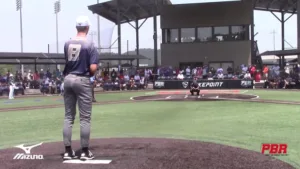 The Importance of Pitching Velocity
The Importance of Pitching Velocity Varied Standards
Varied Standards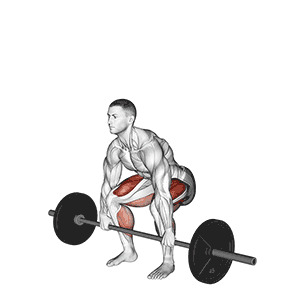 Physical Conditioning
Physical Conditioning Pitching Workload Management
Pitching Workload Management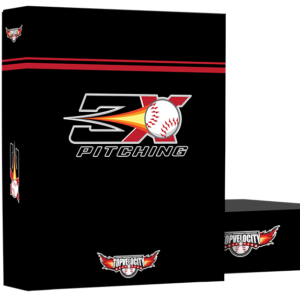 3X Pitching Velocity Program: Unleashing Potential Through Science
3X Pitching Velocity Program: Unleashing Potential Through Science
 The Stride Excelerator: Optimizing Stride Length and Timing
The Stride Excelerator: Optimizing Stride Length and Timing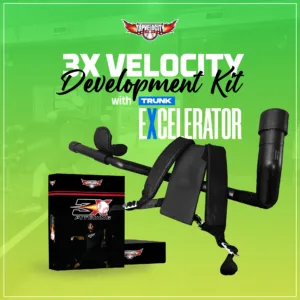 The Trunk Excelerator: Strengthening Core Stability for Performance
The Trunk Excelerator: Strengthening Core Stability for Performance